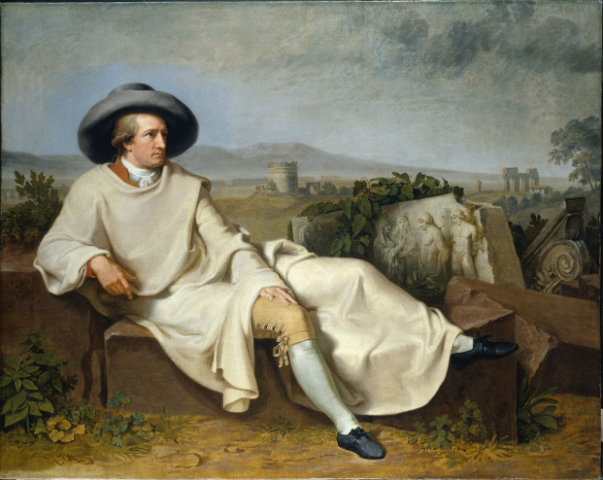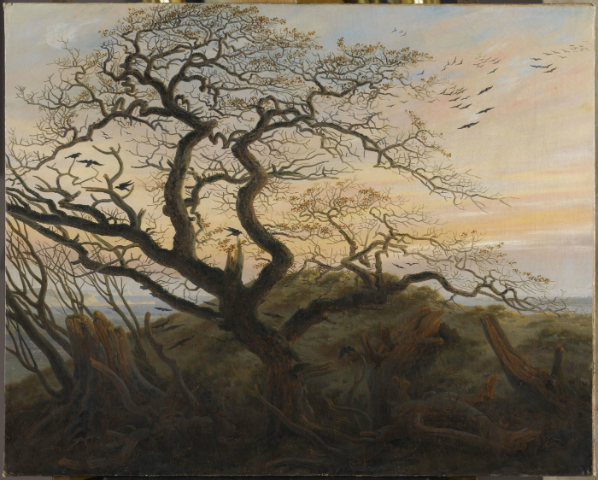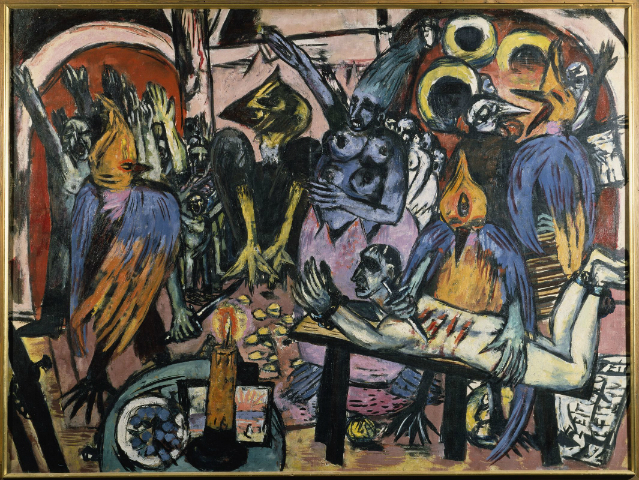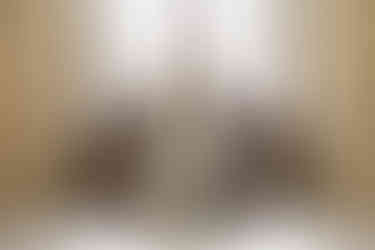Lost in the Louvre: De l'Allemagne and the Quest for Pistoletto
- (first published on artlifemagazine.com)
- May 1, 2013
- 7 min read
Updated: Mar 25, 2020
(Paris.) If Paris is Disneyland, the Louvre is the ultimate ride, a mix of Space Mountain and Indy. And Mona Lisa is Mickey.
Statistics count up to thirty million tourists coming to Paris each year, ninety-nine point five percent of these visit the same three sites: Eiffel Tower, Champs Elysees, and Lisa. Despite of France suffering badly from the recession (or the succession of different baptized "crises" over the past twelve years), the tourist sector is thriving as ever.
Most tourists visit even more than one museum, and the British model of free admission is completely beyond French imagination. The Parisian city budget could probably be covered by the revenues of all public held museums alone, if those were not actually managed by the state.
If you want to see the exhibitions Michelangelo Pistoletto and De L'Allemagne 1800-1939 (About/From Germany), this will set you back fifteen Euros (about $20, £13, or 120 Yuan) per ticket. You may stay at the Louvre all day, further supporting French economy with a visit to the shopping mall under the museum. All the highlights of modern culture are here: from an Apple store to Starbuck's and McDonald's. The Louvre perfectly mixes in with the other brands and Louvre merchandising proves there is hardly a thing you could not decorate with the Mona Lisa and people still buy it. Nobody would be surprised to find the lady smiling in anticipation from sheets of toilet paper (this would be a very Duchampian idea: LHOOQ). Now, with the market potential at home virtually exhausted, the Louvre franchise is expanding. There is already a second Louvre in the Northern French town of Lens, and in 2015 a branch will open in Abu Dhabi - this one is going to be interesting: The Louvre is the essence of Western (art) history writing, and the vast majority of its collections seem incompatible with the moral standards of a Gulf emirate (Human forms! Nudity!! Cult objects from various religions!!! Women!!!!). But the Louvre is well prepared to break into the new markets; its Paris headquarters recently launched a department of Islamic art. Which of course goes by the highest standards.
From time to time, the Louvre honors a contemporary artist with an exhibition. Currently this is Michelangelo Pistoletto, a living legend who has been one of Arte Povera's main actors in the 1960s. In the entrance hall a poster guides the way, but passing the ticket control one realizes the exhibition is dispersed over the entire museum space, which measures about 90 sq.km. Let the treasure hunt begin.
Inside the Louvre, two images dominate, and it is hard to guess which one is more common: Mona Lisa signs for the hurried visitor who wants to shoot her (photo) and get out as fast as possible, or the warnings "Beware of Pickpockets". Apart from these, one sees mostly other visitors, which of course can be a pleasure too.
After a staircase and several corridors the first Pistoletto appears in an alley of marble heroes. Venere degli stracci from 1967 is one of the artist's best known works; it consists of a pseudo-Roman female statue embracing a heap of clothes. There are many ways to "read" it, from the countless lives passing away while art stays (not even changes), to the reception of artworks (put some clothes on! and care about the basics before wasting time with art!) to feminism, anti-consumerism, etc.
It follow French and Spanish paintings, antiquities of every era, sort and origin, and when your eyes seek refuge on the walls and ceilings the decor is not less artistic - putti and stucco and gold and marble and royal tapestry, the Louvre was a palace once and has well improved with time. At the nth crossroads, Pistoletto signs point to both sides, the last of these signs I will see during my visit, but this I don't know yet. The legions of Lisa followers go right, so better turn left. Another corridor and another Pistoletto: An installation behind blank curtains called Il Tempo del Giudizio (Judgement Time). Entering this "tent", we circle around a white block. On its four sides a mirror and a religious symbol each - a Buddha sculpture, a prayer rug, a prayer stool, two stone tablets. Apocalyptic only in the title, it rather appears as a reflection on the equality and core of all religions, on their being focused on man - or completely manmade even (after whose image)? Most visitors use it for a quick beauty check (hairstyle, make-up, zipper closed).
Hurrying further on, through ever more halls, staircases and mirror alleys. I spent some time deciphering an Egyptian stele in a video game (or interactive edutainment station); this is really informative. At yet another staircase there is contemporary art with Anselm Kiefer. Exhausted, I whish I had rather bought the Pistoletto catalogue, then descend into Egypt again. Or Cyprus, one leads to the other, somewhere magnificent sarcophaguses are arranged like a Russian Matryoshka doll. I would really like to leave now, but where is the exit?
Somehow - and including several wrong turns - I managed to go all the way back to where it started. Then, at the famous crossing, to the right, and one more Pistoletto turns up: another mirror with the photorealistic image of a man painted on it. Who is inside, who is out, what is real and what is not?
Then there are antique mosaics, paintings from the European Middle Ages, and soon an irresistible stream threatens to tear me away: Lisa lures the lone wanderer into her sphere. If more Pistolettos are hiding here, it will be impossible to have a close look, and I violently push my way out of the mass. When you come to the Louvre, you surely need a lot of luck and stamina to find the rest of Michelangelo Pistoletto's works. They are there, though only for the brave who always preferred Easter to Christmas. Back in the main hall, I suddenly got it: Many ways lead to Rome, and Michelangelo Pistoletto is Italian at least.
Only one way leads to Berlin and De l'Allemagne can be entered directly, without further ado, without having to cross any other Louvre department. Tischbein's portrait of Goethe in the Roman Campagna (1787) prepares for what is mostly to be seen here: A time when the genius came to rest.
The Louvre has chosen some painters of the second rate, Gottlieb Schick, Johann Friedrich Overbeck, Julius Schnorr von Carolsfeld (no, me neither). Schnorr von Carolsfeld's Annunciation from 1820 features an angel with black-red-golden wings and we remember these were the years when "Germany" was invented. A sort of European Union of thirty to forty independent states before, German nationalism was born and "unity" became the word of the moment, successively leading to the (failed) revolution of 1848, the first German national state in 1871 and everything that followed afterwards.
The Biedermeier style meant a cultural counterrevolution in the aftermath of the Napoleonic wars. The political poles were the blue-blooded rulers on the one and a rising nationalist bourgeoisie on the other side, a choice between the devil and the deep blue sea. The poet Heinrich Heine was one of the most fervent critics of his native land in those days. From his safe haven in Paris, he never got tired of attacking the country "Where Rot and Decay Revives (/Pleasures) the worm" ("Wo Fäulnis und Moder den Wurm erquickt", from The Silesian Weavers). Regarding the first part of this Louvre exhibition, one is much inclined to sympathize with him.
Thankfully, there is more. In Romanticist painting, Caspar David Friedrich and Carl Gustav Carus explored the beauties of (German national) nature. At its best their art summons the atmosphere of a Grimms' fairytale with gruesome mystery lurking behind every tree. And at its worst these deserted mountains and woods are just boring; one nearly wishes for a roaring deer to create some action at least. Have you ever heard of the German Heimatfilm film genre, invented a good century later?
About two thirds through the show, we find Goethe's Theory of Colors explained in drawings and paintings by the master's own hand. Goethe was a son of the 18th century, not only Germany's national poet but a universal genius (the exhibition also presents a part of his mineralogical collection). His groundbreaking works in the science of vision lead over to the 2Oth century. Goethe's studies of flowers are presented in a vitrine next to dried leaves that Paul Klee collected in 1922, and this says much about the years in-between. If it weren't such a terrible thing to say, you could suppose the German artists needed a catastrophe like the First World War to wake up again. Suddenly there are the expressionists, we find George Grosz, Max Beckmann, Lovis Corinth, Christian Schad and Otto Dix painting the horrors of war and city life. With The Forgery or the Modern Cyclopes (1872), Adolph Menzel initiated Socialist Realism, whilst Käthe Kollwitz' portrait studies prove how politico-socially engaged art can be "true" too. Leni Riefenstahl's video clip for Rammstein (ok, the Olympia film from 1936) is opposed to Robert Siodmak's People on Sunday, there are the photographs of August Sander and more film when Fritz Lang's Metropolis meets Walter Ruttmann's Berlin - Symphony of a City. Sorry for the namedropping, but this part of the exhibition is just great. It shows artists who influenced the world, artists who mattered, shortly before the darkest years of German history arrived.
Since the opening, the German co-organizers complained about alleged stereotypic misrepresentations. I leave it to the reader to judge, whether or not this is "typically German".
The Louvre is not a temple of art. It is a sacred city.
Nearly as big as the Vatican and twice as interesting, it is not possible to come here and leave in less than three hours. On every corner new wonders are waiting. Never underestimate the challenge. But despite all the stress, the masses and the visual overkill, the Louvre still is a must-see, the Everest of Art and History.
It would not be clever to tell, that after leaving I sold my day pass ticket for ten Euros (they are explicitly marked as "not for resale"), so I won't say I did. But this is possible (in theory).
Michelangelo Pistoletto: Anno Uno - Paradise on Earth, Louvre, 25 April-02 September, 2013
De l'Allemagne 1800-1939, Louvre, 28 March-24 June, 2013












Comments